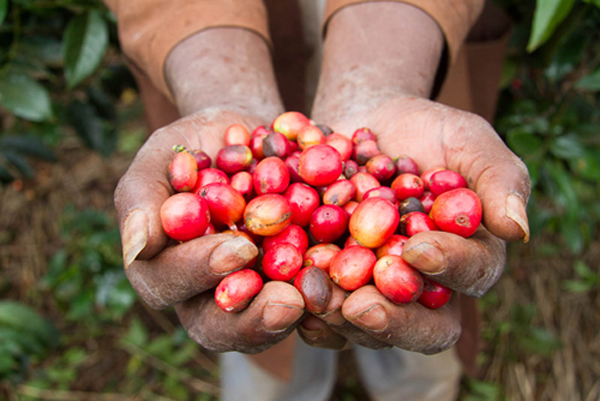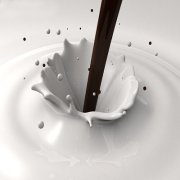Do you know? The climate will affect your coffee.
As the second most traded commodity, coffee is second only to oil in value. Usually, it is thought that "big food companies will always be able to get coffee somewhere in the future", but global climate change is affecting coffee cultivation in tropical countries on both sides of the equator, and the coffee crisis is already brewing.

This cup of coffee in your hand may be affected by the global climate!
Changes in temperature and precipitation: reducing the yield and quality of Arabica coffee
A recent report on the impact of climate change on crop cultivation mentioned that the coffee crisis was already brewing, especially the highly praised Arabica coffee beans. A study, published in PLOS One, simulated coffee cultivation in 21 different climatic conditions up to 2050, covering 60 tropical countries on both sides of the equator, where Arabica coffee is grown.
The changes of temperature and precipitation will reduce the yield and quality and increase the pressure of diseases and insect pests. "this is the first study in the world on the impact of climate change on the appropriate growing environment for Arabica coffee." "globally, we expect the decline in climate suitability at low elevations and high latitudes to change production in the main Arabica coffee producing areas," said Peter L. derach of the International Research Center for Tropical Agriculture.
Although 2050 may sound a long way off, it will take 3-5 years for coffee beans to get a crop. And coffee bean cultivation especially needs to be high-yielding during the period from 2020 to 2050.
Usually, people think that "big food companies will always be able to get coffee from somewhere in the future" because "after all, Vietnam has developed a coffee industry rapidly," or "even if the temperature warms up a few degrees Celsius, farmers can still grow coffee on higher mountains.
It sounds easy, but it's actually very difficult. But the researchers point out that small farmers or farmers in major coffee-producing countries such as Brazil cannot simply shift production to higher elevations. There are many reasons, such as land use rights, topography and avoiding further deforestation.
One of the solutions: intercropping bananas and coffee beans
In fact, most possible solutions, such as irrigation, extensive pest control, new or alternative crop varieties, shading systems, and new field cultivation, are expensive or have other negative consequences. One promising approach seems to be banana and coffee bean intercropping, using banana plants to provide the extra money and shade needed to grow coffee beans.
A referential overview document of the Consultative Group on International Agricultural Research (CGIAR) contains a short video. The video shows the impact of an average temperature rise of 2 degrees Celsius on the risk of diseases (coffee leaf rust) and pests (coffee tiger longicorn beetles), which are precisely threats in warmer conditions.
This suggests that if existing crops are destroyed, Central American producers may be forced to return to the era of cassava with less retail value.
Roger Williamson is a dual-source visiting scholar at the World Institute for Development Economics at the United Nations University and the Development Institute at the University of Sussex, as well as an independent consultant. "this is all thought-provoking evidence that the coffee in our cup depends on climate, pest and plant science, not to mention that the livelihoods of more than 100 million people depend on this good balance," he commented. "
Left-handed coffee, right-handed world: coffee economy has a significant impact.
The economic impact of coffee is significant, especially for exporters and small farmers. Coffee is an important export product for tropical countries. Mark Pendergrast, author of left-handed Coffee, right-handed World: a Commercial History of Coffee, calls it "country mythology". As the second most traded commodity, coffee is second only to oil in value.
The coffee industry is a big business and is highly concentrated in the hands of several major food companies. The views of economist Tim Harford help us understand the end of the industry-coffee shops. In commercial centers in rich cities in industrialized countries, a cup of coffee costs at least $3, he says.
Let's look at the other end of the equation-the coffee grower. In 2010, Duncan Green, a well-known blogger and Oxfam strategist, asked coffee growers in Ethiopia, "how much do you think a cup of coffee in a London coffee shop should cost?" Their guess is 2% of the actual price, or 50 times the difference. The girls and women who sort coffee beans there may have to work for eight years to earn Green's one-day income.
About 70 per cent of the world's coffee production comes from small producers in the coffee industry, which has 25 million growers. The above events show that profits will not fall on small producers in the end.
Important Notice :
前街咖啡 FrontStreet Coffee has moved to new addredd:
FrontStreet Coffee Address: 315,Donghua East Road,GuangZhou
Tel:020 38364473
- Prev

Can milk and coffee really lose weight?
Can you drink it with milk and coffee? Before considering whether these two things can lose weight, let's consider whether these two kinds of things can be drunk together. Milk and coffee can be said to be two completely different things, one is the milk of animals, the other is extracted from plants. In fact, these two kinds of things can be mixed and drunk together, not only can be mixed, but also a kind of unique.
- Next

The method of how to bake coffee beans at home to illustrate the difference in roasting degree of coffee beans.
Many people buy raw beans for the first time and do not know how to bake coffee beans after buying them back. The following is based on my practical experience to introduce you: 1. The simplest and most primitive way-pan frying, daily cooking, wok for cooking, coffee roasting for a long time before there was no professional baking machine.
Related
- Beginners will see the "Coffee pull flower" guide!
- What is the difference between ice blog purified milk and ordinary milk coffee?
- Why is the Philippines the largest producer of crops in Liberia?
- For coffee extraction, should the fine powder be retained?
- How does extracted espresso fill pressed powder? How much strength does it take to press the powder?
- How to make jasmine cold extract coffee? Is the jasmine + latte good?
- Will this little toy really make the coffee taste better? How does Lily Drip affect coffee extraction?
- Will the action of slapping the filter cup also affect coffee extraction?
- What's the difference between powder-to-water ratio and powder-to-liquid ratio?
- What is the Ethiopian local species? What does it have to do with Heirloom native species?

